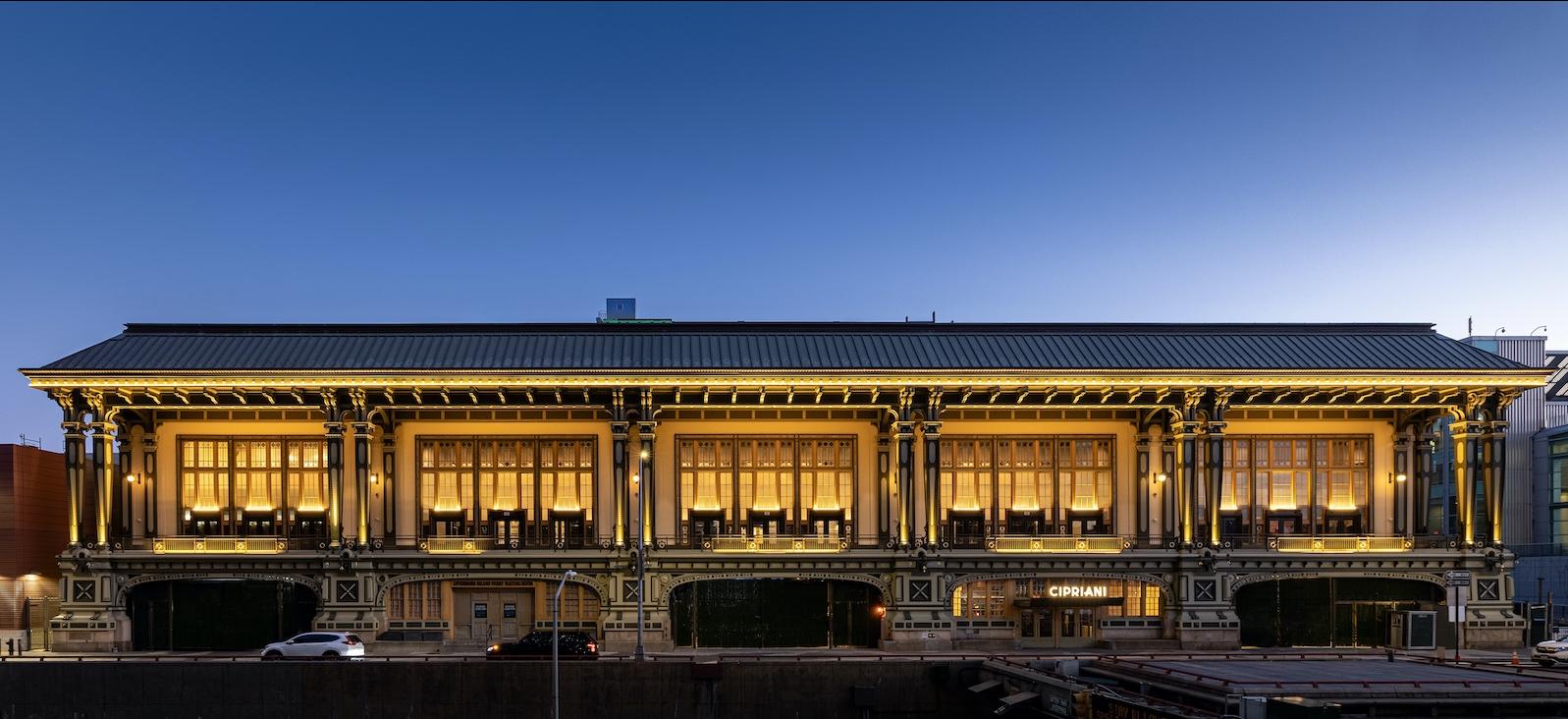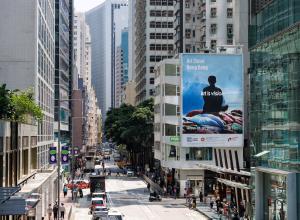
Battery Maritime Building.
Fall is upon us and with it a new slate of exhibits signaling the start of another season in art. This year’s events follow the pandemic lockdown that shuttered the art world for more than twelve months, a period when dealers resorted to online viewing rooms before partially re-opening their spaces in the spring. Still, the pandemic raised the existential question of whether or not the art world can resume business-as-usual. It’s too soon to say, and this preview doesn’t presume to provide an answer. But it does offer a look at the art events to be excited for in the coming months.
Whatever the fate of the post-COVID art world, the possibility to attend exhibits in the flesh again is reason enough to make this autumn in NYC a memorable one for art.
Nadia Belerique, HOLDINGS (Ongoing), 2020. Plastic barrels, metal frame, stained glass, lead, copper tape, fabrics, photographs, rainwater, paint, various objects, dimensions variable. Exhibition view: Kunstverein Braunschweig.
Like the Whitney Biennial, the New Museum Triennial launched in 2009 as a recurring roundup of newly emerging talents, though one with an international reach. Also like the Biennial, the Triennial can be a hit or miss affair, though it reliably introduces fresh faces that are little known in New York. Each show has had a theme, and this year’s is particularly timely. Taken from a Brazilian saying for being persistent while overcoming obstacles: "Soft water on hard stone hits until it bores through.” A metaphor, say the show’s organizers, for artistic resilience in the face of a collapsing social order.
Great Hall at Battery Maritime Building, New York.
Part of the first Armory Arts Week since pandemic restrictions were lifted, the Independent was founded in 2010 by Elizabeth Dee and Matthew Higgs. A hybrid of art fair and exhibition, the Independent has traditionally focused on small to medium-sized galleries (both commercial and non-profit) willing to take risks on young, self-taught, or overlooked artists. The same goes for the 2021 edition, which includes forty galleries and takes place for the first time in the Battery Maritime Building at Cipriani South Street. Pay a visit and see why the Independent is called the smartest and most adventuresome showcase of its kind.
Jasper Johns, Target with Four Faces, 1955. Encaustic and collage on canvas with objects. 29 3/4 × 26 in. (75.6 × 66 cm).
Jasper Johns is famous enough to have warranted an appearance on The Simpsons, though many viewers were probably unaware of his seminal place in twentieth-century art. While detractors have called his work “overdetermined,” there’s no denying Johns’ role in dismantling Abstract Expressionism at midcentury. Johns mocked AbEx’s existential angst and gestural theatrics by depicting an enigmatic vocabulary of signs—targets, flags, numbers—with dabs of encaustic pigment frozen over skeins of newsprint. Now, his sixty-five-year career is being accorded a major retrospective. The survey is so large it requires concurrent exhibitions at the Whitney Museum of American Art and the Philadelphia Museum of Art.
Kandis Williams, Otto Preminger’s Carmen Jones - October 28th 1954, Brown v. Board of education - May 17th 1953, 2020.
Lately, Tribeca has been heating up as the newest gallery district, but this space debuting in October is especially noteworthy because of its affiliation with mega-dealer David Zwirner. Helmed by Zwirner Director Ebony L. Haynes, the venue will showcase “conceptual and research-based work” by artists from “different backgrounds and stages in their careers.” The inaugural exhibit features Kandis Williams, a multimedia artist whose work comments on the damaging legacies of racism and nationalism. While none of the artists will be represented by Zwirner, his imprimatur carries a lot of weight, making 52 Walker a place to watch this fall.
The Metropolitan Museum of Art entrance façade. Manhattan, New York City.
Besides being creative pioneers, Surrealism’s most iconic artists—André Breton, René Magritte, Salvador Dalí, Max Ernst, Joan Miró—shared a common demographic: They were all white European men. But while the revolutionary art and literary movement originated in Paris, it rapidly became a global phenomenon that came to include women and artists of color. This eye-opening survey at The Metropolitan Museum explores the spread of Surrealism to Latin America, Africa, and Asia, and how, as a result, it evolved from "pure psychic automatism," as Breton originally defined it, to an art of protest responding to colonialism and political oppression.
Nadia Belerique, HOLDINGS (Ongoing), 2020. Plastic barrels, metal frame, stained glass, lead, copper tape, fabrics, photographs, rainwater, paint, various objects, dimensions variable. Exhibition view: Kunstverein Braunschweig.
Like the Whitney Biennial, the New Museum Triennial launched in 2009 as a recurring roundup of newly emerging talents, though one with an international reach. Also like the Biennial, the Triennial can be a hit or miss affair, though it reliably introduces fresh faces that are little known in New York. Each show has had a theme, and this year’s is particularly timely. Taken from a Brazilian saying for being persistent while overcoming obstacles: "Soft water on hard stone hits until it bores through.” A metaphor, say the show’s organizers, for artistic resilience in the face of a collapsing social order.
Great Hall at Battery Maritime Building, New York.
Part of the first Armory Arts Week since pandemic restrictions were lifted, the Independent was founded in 2010 by Elizabeth Dee and Matthew Higgs. A hybrid of art fair and exhibition, the Independent has traditionally focused on small to medium-sized galleries (both commercial and non-profit) willing to take risks on young, self-taught, or overlooked artists. The same goes for the 2021 edition, which includes forty galleries and takes place for the first time in the Battery Maritime Building at Cipriani South Street. Pay a visit and see why the Independent is called the smartest and most adventuresome showcase of its kind.
Howard Halle
Howard Halle is a writer and artist who has exhibited his work in the United States and Europe. Between 1981 and 1985, he was Curator of The Kitchen's Gallery and Performance Art series. From 1995 through 2020, he was Chief Art Critic for Time Out New York. He lives and works in Brooklyn.




























